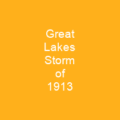What is the Beaufort Scale?
The Beaufort scale (BOH-fərt) is an empirical measure that relates wind speed to observed conditions at sea or on land. It was devised by Francis Beaufort in 1805 and refined until it was adopted officially in the 1830s. Imagine a weather vane, but instead of just pointing, it tells you exactly what’s happening with the wind!
A Brief History
Back in 1805, when ships were the primary means of transportation and exploration, Francis Beaufort came up with this ingenious way to measure winds. He wanted a simple system that sailors could use without needing fancy instruments. So, he created something that’s still used today, even though technology has advanced so much.
Evolution Over Time
The scale has undergone modifications over the years to accommodate changes in technology and weather forecasting practices. It’s like a living organism, constantly adapting to new environments and challenges. For instance, Met Éireann issues warnings for Irish coastal waters based on Beaufort force winds: Small Craft Warning at 6 (22 knots), Gale Warnings at 8, Strong Gale Warnings at 9 or gusts of at least 52 knots, Storm Force Warnings at 10 or gusts of at least 61 knots, Violent Storm Force Warnings at 11 or gusts of at least 69 knots, and Hurricane Force Warnings for winds over 64 knots.
Global Variations
The scale is used worldwide, with variations in some countries. Taiwan uses the scale with wind speeds up to 17. China switched to an extended version in 2006. Hong Kong and Macau retain force 12 as the maximum. The United States issues small craft advisories for winds of 6 or 7, gale warnings for 8 or 9, storm warnings for 10 or 11, and hurricane-force wind warnings for 12. Canada uses similar designations with standardized wind speeds from 2008.
How It Works
Think of the Beaufort scale as a weather barometer that measures not just the speed but also the impact of the wind on the environment. For example, at force 6 (22 knots), you might see small waves with crests beginning to break and white foam from spray. At force 8, it’s like a storm is brewing; trees are in motion, and there are large waves with some spray.
Practical Applications
The scale isn’t just for sailors anymore. It’s used by meteorologists, pilots, and anyone who needs to understand the impact of wind on their activities. For instance, Met Éireann uses it to issue warnings that can help people prepare for severe weather conditions.
Conclusion
The Beaufort scale is a timeless tool that helps us navigate through the storms of life, whether we’re at sea or on land. It’s like having a map in your pocket, guiding you through the unpredictable winds of nature. So next time you hear about a Beaufort force warning, remember: it’s not just a number; it’s a story of wind and weather, told in simple terms that everyone can understand.

You want to know more about Beaufort scale?
This page is based on the article Beaufort scale published in Wikipedia (retrieved on January 13, 2025) and was automatically summarized using artificial intelligence.






